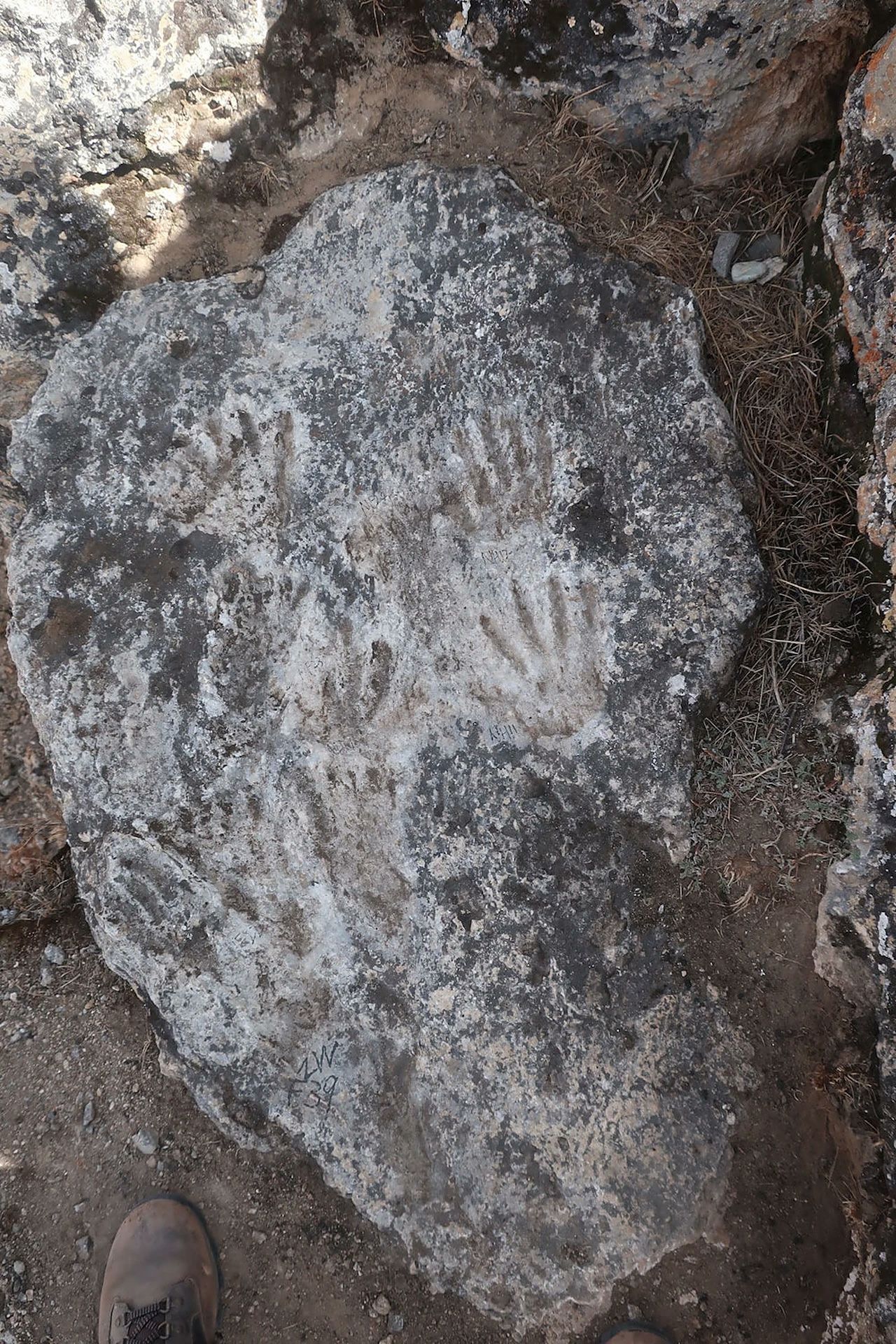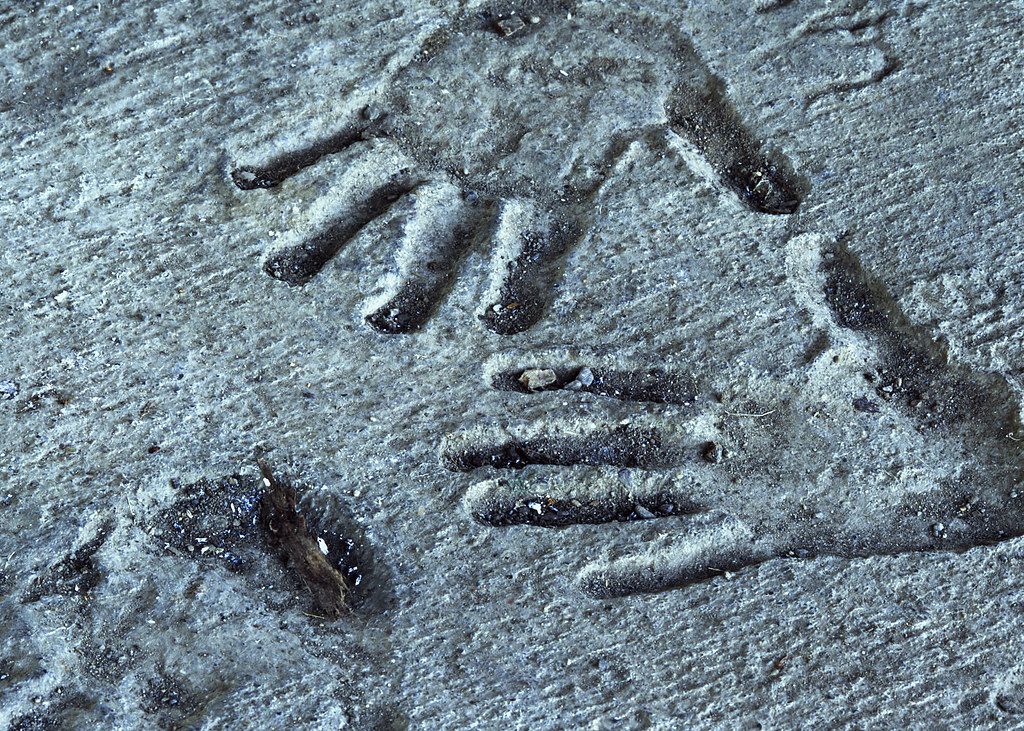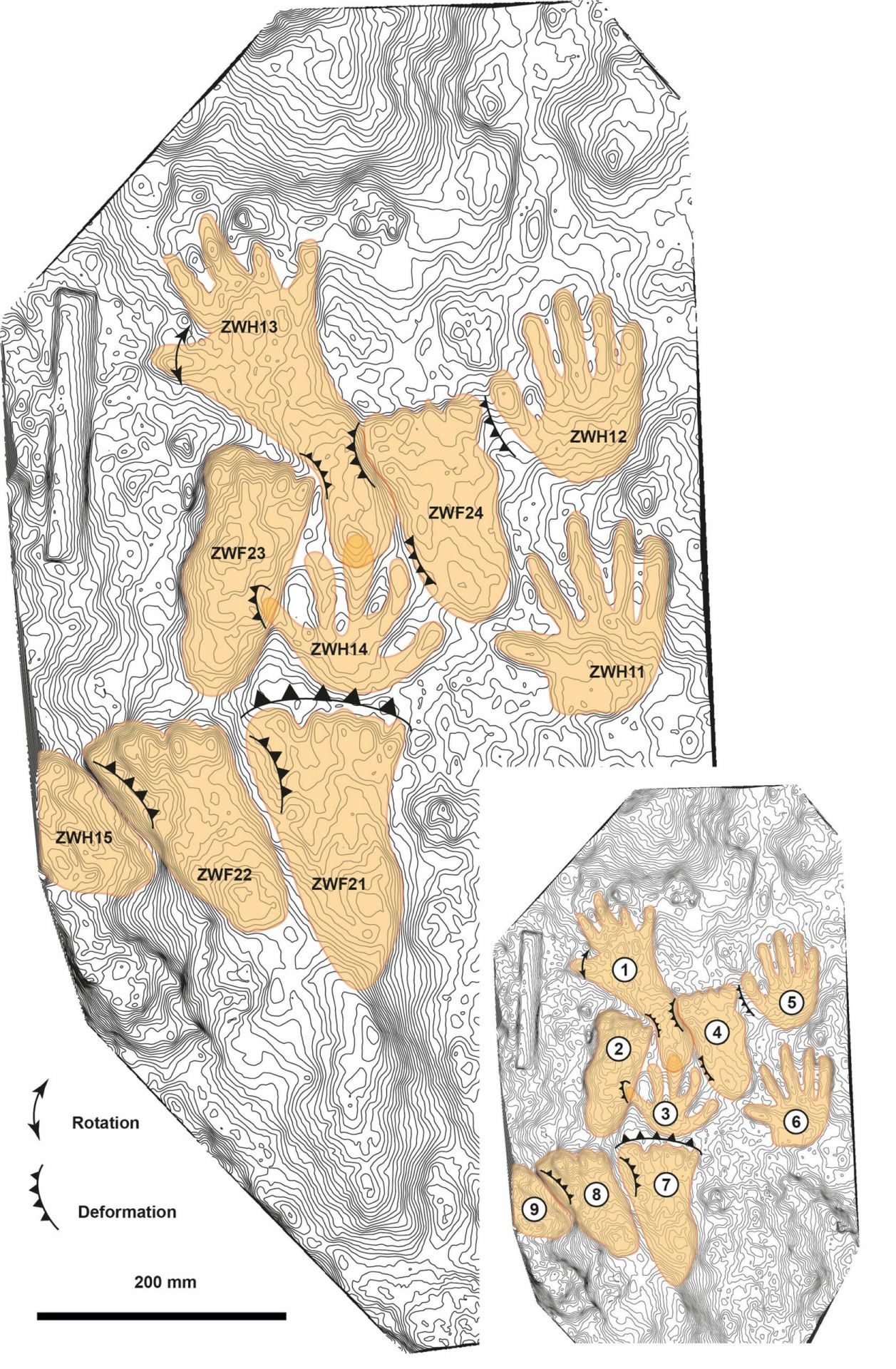Archaeologists discover children’s hand and foot prints on stone slab, believed to be oldest art ever.
The recent discovery of a series of hand and foot impressions in Quesang village, located in the Tibetan Plateau, has the potential to reshape our understanding of art history. According to a newly published article in Science Bulletin, these ancient prints, believed to have been intentionally placed, could be the earliest examples of cave art ever found, dating back between 169,000 and 226,000 years ago.
While there is ongoing debate regarding the classification of these impressions as art, proponents argue that the deliberate composition and the absence of common locomotion patterns support their categorization. Geologist Matthew Bennett, among others, emphasizes the intentionality behind the placement of the traces and the careful avoidance of overlap. This challenges the notion that the prints were simply byproducts of regular movement, such as walking or grasping for stabilization. If these impressions are indeed considered art, they would predate the previously known figurative findings in Sulawesi (approximately 43,900 years ago) and Lascaux (around 17,000 years ago).
Preserved on a travertine limestone surface, the size and variations of the prints suggest that they were made by two children. Archaeologists propose that the indentations, comprising five feet and five hands, were originally placed in mud near the Quesang Hot Spring before undergoing compaction under pressure. This process, known as lithification, resulted in the preservation of the children’s prints within the hardened material for thousands of years. While the exact identity of the creators remains uncertain, the timeline of the impressions aligns with the presence of the Denisovans, an extinct species from the hominin group that predominantly inhabited Asia. If the creators were indeed Homo sapiens, they would have been approximately 7 and 12 years old at the time.
The discovery of these ancient hand and foot impressions in Quesang village sheds new light on the early origins of artistic expression. If confirmed as intentional cave art, they would represent a significant milestone in human creativity, pushing back the timeline for such artistic endeavors. Further research and analysis will undoubtedly provide additional insights into the identity and cultural significance of the individuals behind these remarkable impressions, enriching our understanding of our ancient past and the evolution of human artistic endeavors.
Hits: 0





